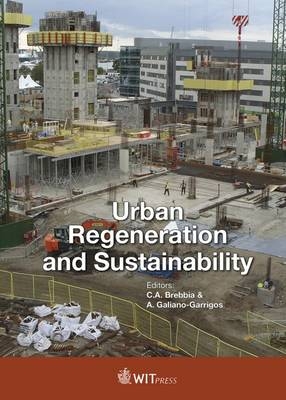
Urban Regeneration & Sustainability
WIT Press (Verlag)
978-1-78466-239-4 (ISBN)
ContentsImproving urban accessibility: a methodology for urban dynamics analysis in smart, sustainable and inclusive cities; Assessment of sustainable neighbourhoods: from standards to cultural practices; Between the transfer of development rights and the equivalency values: the case study of Natal, Brazil; Shareable city, regenerated by making; Reforging spatial identity for social sustainability; The reorganization of development rights at inter-municipal level: different scenarios for an alternative land-use forecast in Seriana Valley in Italy; Sustainable cities: an analysis of the contribution made by renewable energy under the umbrella of urban metabolism; Driving functions for urban sustainability: the double-edged nature of urban tourism; The role of business incubators in the development of sustainable clusters of cultural and creative industries; Urban facilities management: a systemic process for achieving urban sustainability; 'The Management indicator' from the point of view of an urban assessment; Continuity and adaptability: a collaborative, eco-industrial park (EIP)-focused approach to managing small town community (STC) sustainability; Social conflicts in coastal touristic cities. Holistic renovation of buildings in Benidorm; Green coastal zones: nodes and connectors as strategy of urban regeneration; The challenges on spatial continuity of urban regeneration projects: the case of Fener Balat historical district in Istanbul; Non-financial compensations: a proposal to refurbish the old residential buildings in Benidorm (Spain); Planning and management challenges of tourism in natural protected areas in Baja California, Mexico; Comparative analysis of environmental performance of an office building using BREEAM and GBL; From ecocity to ecocampus: sustainability policies in university campuses; Smart monitoring of benzene through an urban mobile phone network; Evolution as a kaleidoscope: experiences of resiliency and relevancy in Lethbridge, Canada; CITYOPT planning tool for energy efficient cities; Supporting carbon neutrality in urban environments using positive energy buildings; Functional aspects of modern and ancient pedestrian mobility on historic stone pavements; Assessment of tax burden on the ownership and use of road passenger transport in Russia; Exploring affordances of the street; Urban dystopias: cities that exclude; Y21: culture-led regeneration in twenty-first century UK city regions; The informal economy of cities in the south: the case of Cali, Colombia; Public participation in the process of improving quality of the urban frame; On the relationship between the promotion of environmental sustainability and the increase of territorial competitiveness: the Italian case; Sustainability multivariate analysis based on the global reporting initiative (GRI) framework, using as a case study: Brazil compared to Spain and Portugal; 60 years of urban development in Denia and its influence on the Marineta Cassiana beach; Alicante beach-city sustainable development; Alicante coastal management for sustainable development; Sustainable development city-beach in Alicante; Water quality of the beach in an urban and not urban environment; The role of public space to achieve urban happiness; Place identity and sustainable urban regeneration: public space in Canberra city centre; Counteracting food deserts. The potential for mobile food vending in regenerating contemporary cities; Place-making and its implications for social value: a comparison study of two urban squares in London; Sustainable interdisciplinary transformation of Warsaw University of Technology buildings. Kodnzeb case study; Sustainable living models; Sustainable policies to improve urban ecosystem resilience; From resilience to flexibility: urban scenario to reduce hazard; Grunspitz Giesing - to (re)make a public place soundscape and soundwalk - concepts and methods to evaluate uses of a noise polluted site; Urban regeneration of public space - Al-Alfi Street - downtown Cairo; Sustainability, territorial resources and social capital; Quality of public spaces and sustainable urban development: success and failures in fighting social exclusion; Pedestrian level of service: the impact of social groups on pedestrian flow characteristics
| Erscheinungsdatum | 03.12.2016 |
|---|---|
| Zusatzinfo | illustrations |
| Verlagsort | Southampton |
| Sprache | englisch |
| Themenwelt | Naturwissenschaften ► Biologie ► Ökologie / Naturschutz |
| Naturwissenschaften ► Geowissenschaften ► Geografie / Kartografie | |
| Sozialwissenschaften ► Soziologie | |
| Wirtschaft ► Volkswirtschaftslehre | |
| ISBN-10 | 1-78466-239-9 / 1784662399 |
| ISBN-13 | 978-1-78466-239-4 / 9781784662394 |
| Zustand | Neuware |
| Haben Sie eine Frage zum Produkt? |
aus dem Bereich


